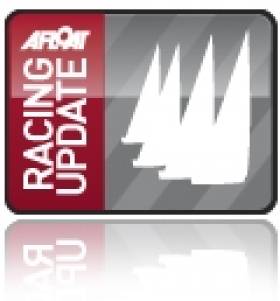Displaying items by tag: Kitesurfing
'Battle For The Bay' on Bull Island This Weekend
#KITESURFING - Ireland's top kitesurfers and stand-up paddlers will be out in force on Dollymount Strand this weekend for the sixth Battle For The Bay.
The second leg of the Irish Kitesurfing Association (ISKA) Tour will see the best of Irish kitesurfing talent take on riders from around the globe at one of the best spots in Ireland for the sport. Organisers describe the concept as very simple: fun, wind, watt and fun!
Stand-up paddleboarding - a hybrid of longboarding and kayaking - will also have its day in the sun with the second annual Battle For The Paddle.
Racing will be the highlight, of course, but the weekend will also feature demos on the beach, a freestyle show and kite introductions for newcomers, plus a beach party and BBQ and much more.
For more details visit BattleForTheBay.com.
Windsurfers Must Make Way for Kites at 2016 Olympics
#KITESURFING - Windsurfers have vowed to battle to overturn the decision to cut their sport from the Olympic Games in 2016 in favour of kitesurfing.
As the Independent reports, kitesurfing has been given two medal events at the 2016 games in Rio de Janeiro, following a mid-term meeting of the International Sailing Federation (ISAF) in Italy.
"I am raw, sore, and shell-shocked by the decision," said Rory Ramsden, secretary of the RSX board association, who was also said to be rocked by the turning of the tide against windsurfing at the emotionally charged meeting.
Ireland's John Crebbin was among those who gave impassioned speeches in favour of kitesurfing before the board voted 19-17 in favour of the relatively new discipline - a decision strongly supported by the USA, Bulgaria, Greece and even windsurfing stalwarts Spain.
The French contingent, meanwhile, was reportedly "devastated" at the news.
A two-thirds majority would be required by the windsurfing lobby to overturn the decision at the ISAF’s annual general meeting in November.
The Independent has more on the story HERE.
East Africa on Kitesurfing Map Thanks to Irish-born Kenyan
#KITESURFING - An Irish-born Kenyan is putting the East African country on the extreme sports map thanks to her beach resort dedicated to kitesurfing.
As the Montreal Gazette reports, Joey Kennaway - who has lived in Kenya since she was three years old - started The Kenyaway with her husband as a shack on Galu Beach, south of the coastal city of Mombasa.
But when their daughter Linzi got into kitesurfing after lessons from local tutors, the resort soon morphed into a kitesurfing village attracting daredevils from around the world.
“Kitesurfing is not for your average country-club tennis player,” says Boris Polo, owner of kitesurfing school H2O Extreme, which now has a base at The Kenyaway. “What’s hard to master is the kite. They’re very powerful."
Though she hasn't tried it herself, Joey Kennaway is happy to watch some of the thousands of all ages who've taken lessons at the resort out on the water.
The Montreal Gazette has more on the story HERE.
Stunning Photos of Kitesurfing in Dublin Bay
#KITESURFING - Photographer Luis Faustino has captured some stunning shots of Dublin kitesurfer Rob Clarke in action off Dollymount Strand.
"Dublin is quite windy, especially near the sea, in the bay," writes Faustino. "It's natural to see kitesurfers in many places and one of my favorite spots is Bull Island."
Find more of Luis Faustino's Dublin Bay kitesurfing photos HERE.
'The Rules of Racing' Lecture in Castlebar This Thursday
#RACING - Mayo Sailing Club's winter series of lectures continues this Thursday 23 February with a talk by Ed Alcock on 'The Rules of Racing'.
Alcock is racing manager of the Irish Sailing Association (ISA), and his lecture will outline the laws that govern racing by windpower on the water in Ireland, covering classes from yachts and dinghies to windsurfing, kitesurfing and more.
Topics to be covered include rights and obligations on the water, giving way, keeping clear, red flags and protest forms.
Sailors of all craft are invited to attend the evening, and anyone wanting to get involved in racing is also welcome, especially with the 2012 racing season only eight weeks away.
Alcock's talk takes place this Thursday at 7.30pm in GMIT Castlebar. The Galway Advertiser has more HERE.
Kitesurfer Ross Harte Catches Big Air on Video
#KITESURFING - Dublin kitesurfing pro Ross Harte takes our breath away with this video shot from the top of his 12-metre kite, via WorldIrish.
The 30 knot winds are clearly no problem for this daredevil as he catches some big air from the blue surf.
Ireland to Showcase 'Planet's Biggest Waves' on 2012 Kite Surf Tour
#KITESURFING - Ireland will be one of four stops on the 2012 Kite Surf Pro World Championship Tour to decide the best wave kitesurfers in the world, Surfer Today reports.
Kicking off in Cascais, Portugal in June before heading to Mauritius in September, the tour will come to Ireland's west coast - described as "Europe's secret kite surfing jewel and home to one of the planet's biggest waves" - from 19-28 October.
According to Surfer Today: "Ireland's Kite Surf Pro will incorporate a unique mobile format, capable of showcasing each day's action at the choicest of locations on the country's wild and swell-abundant west coast."
The tour will wrap up in Maui, Hawaii from 29 November to 8 December, where the €15,000 prize purse wil be up for grabs at the famed surfing venue of Ho'okipa.
Surfer Today has more on the story HERE.
Nin O'Leary Heads West on Kitesurfing Expo
#KITESURFING – So this is what Royal Cork Yacht Clubs' finest get up to in the closed season! A top class crew took to the air at the weekend when Triple all Ireland Sailing Champion Nicholas O'Leary led four people, two cars, six kites, five boards, 110km west on a road trip to Castlegregory, Kerry on a Kitesurf trip.
From Brian Carlin's video you can see conditions looked ideal with a six metre swell and 15-20 knots of breeze and lovely winter sunshine!!
Video Shows Best of West Coast Kitesurfers
#KITESURFING - Irish kitesurfing's Mulranny Crew have had their best clips for 2011 compiled on YouTube.
The freestyle crew, based in the West of Ireland, describe themselves as "group of enthusiastic local riders, who try to push themselves harder every time they hit the water."
The group includes Neil McKenna, Kevin Cowley, Rory Stoney, Padraic Doherty, Nick Isherwood, Gavin Hughes, Fionn Wandel Brannigan and Barry Grogan.
See the Mulranny Crew in action on YouTube below:
Wheelchair User Learns to Kitesurf
#KITESURFING - A wheelchair user from Northern Ireland is defying what's generally expected of people with disabilities by learning how to kitesurf.
As Australian surfing website Seabreeze reports, Jason McGrugan has been attempting to teach his friend Jen how to kiteboard over the past few weeks, and has been posting videos of their progress online.
So far Jen has learned to fly the kite on the beach, set it up on her own and body drag upwind.
The next step will be riding on the board, which will require a custom seat and board that the duo is currently designing.
Once that's accomplished, it's hoped that Jen will be up and riding the waves in the first half of the new year.
Check out the first in Jason and Jen's video series below:


























